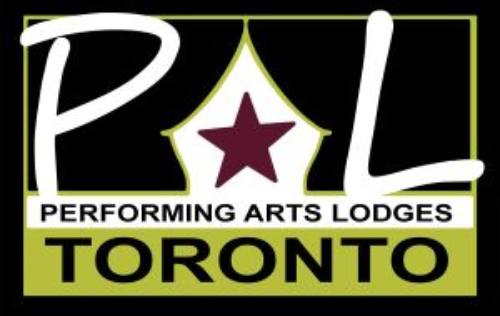
A History of PAL
Although other countries offer similar residences for artists, PAL Toronto is the first in Canada.
Our evolution from 1985 to 2003 based on an article by Mary Joliffe, 2004
Mary Jolliffe (1923 - 2014) was a Canadian theatre and performing arts publicist, a founding member of PAL Toronto, and one of its first residents. In addition to numerous accolades and awards, the Stratford Festival honoured her contributions as the Festival's first Publicity Director.
1980s
Canada's entertainment industry had come of age. Unions were established. Thousands worked, created, and made a living in live theatre, film, broadcasting, and the music industry, including the administrative, and technical fields. A group of Toronto performers had a vision to create affordable housing and improve living conditions for those in the professional performing arts.
1986
Gathering support from the artistic community and industry leaders, on September 5th the Letters Patent was issued effectively incorporating PAL Canada. Roy Wordsworth was elected President of the first Board of Directors.
1988
The Supporting Cast program was established as a volunteer-run organization. Under the direction of Patty Gail Peaker, the program helped Toronto colleagues in need of assistance.
1985
The Original Founders
On the evening of January 5th, Patty Gail Peaker gathered the Board members of the Smile Company http://smiletheatre.com/
They included:
Then-current Artistic Director, Robert Christie
Founding Artistic Director, Peter McConnell
Co-Founder and former Managing Director, Brian Robinson
Other Smile Company Board of Directors in attendance were:
Syme Jago Robert Peaker
Peter Lavender Patty Gail Peaker
Sid Young
Also present were such luminaries as:
Prominent television performer, Roy Wordsworth
Renowned actor, Barry Morse
President of Canadian Actors' Equity, Sandy Webster, and
Celebrated band leader, Billy O'Connor
This Steering Committee laid the groundwork and formed PAL Canada® Foundation Inc.
1987
Securing national charitable status, PAL Canada could now acquire the endorsement of the industry's associations.
1993 - 2000
There were changes in Board leadership, but PAL Canada never lost sight of its national objectives. It launched a membership campaign targeting the arts community nationally, and with the backing of its industry associations, helped kickstart the creation of what would become PAL Chapters in Vancouver, Stratford, and Halifax.
1993
Working tirelessly with developers, architects, government agencies, bureaucrats and politicians, the founding group brought PAL Canada's concept to reality. The first Lodge, named PAL Place, opened at 110 The Esplanade in Toronto. (The name, PAL Place refers to the physical building, and currently is still used by the City of Toronto.)
PAL Place was built in partnership with the provincial Ministry of Housing under Homes Now, a 1989 government housing program, combining market rentals and rent-geared-to-income units.
Currently, PAL Toronto, the charity, owns and operates the building and hires a professional management company to run its daily affairs. The Royal Bank of Canada holds the mortgage paid annually from rent revenue and a municipal housing subsidy.
Originally, the Ontario government subsidized our building by contributing the difference between Rent Geared to Income and Market Value units. Currently, the City of Toronto picks up this shortfall. Outside of this funding, other revenue comes entirely from contributions made through memberships, private donations, money provided by industry unions and associations, or Board fundraising projects.
2002
PAL Canada recognized the need to separate its national role from its hands-on running of the Toronto building. That year, it formed a new governance structure establishing and incorporating PAL Canada Foundation as a National Foundation and incorporated the Toronto PAL Chapter with its own Board and By-Laws.
2002 - 2004
Political shifts took place in Ontario marking changes in provincial and municipal government. In 2002, The Ontario government 'downloaded' the responsibility for subsidized housing to the municipalities - in our case, the City of Toronto. Because of this, our building no longer reports to the Provincial Ministry of Housing, but to the City of Toronto's Social Housing Unit.
Our building was to come under the general rules of a central waiting list, and would permit individuals with no relationship to the arts, to become residents.
To change this and identify our unique community, PAL Toronto presented its housing mandate (as required by the City's Mandates for Social Housing Providers) to City of Toronto Councilors. It won recognition, making PAL Place the only building in Canada to identify members of the performing arts profession as a special sector, in a societal as well as an artistic dimension.
2004
PAL's housing mandate was recognized by the City of Toronto. The administrative transfer of social housing from the province to the municipality began. The City required more rigorous conditions on both Market Rent and Rent Geared to Income occupancy.
As a result, all new applicants needed to prove their eligibility in the professional performing arts. The Residential Accommodation Committee (RAC), a Standing Committee of PAL Toronto's Board, monitors compliance to this ruling.
The primary task for both PAL Toronto and Toronto's Social Housing Unit is to maintain the balance of Market Rent and Rent Geared to Income units in the building, to ensure the City of Toronto's ongoing financial support. Thus, insistence that residents adhere to current housing regulations keeps our future secure.
Finally, all residents have the democratic right to voice their concerns and opinions. Along with our rights, we also have responsibilities. The priority is to protect the collective well-being of the community to which this building is dedicated and maintain its rules of engagement.
PAM HYATT
Moved in February ’93, “Got a barn! Let’s put on shows!” Great fun, tons of hard work. Spent a decade in British Columbia, returned 2011, this is my FINAL HOME, love it so much! Incredible friendships, creative community, most residents understand the weird work we do. BLESSINGS, PAL TORONTO!


